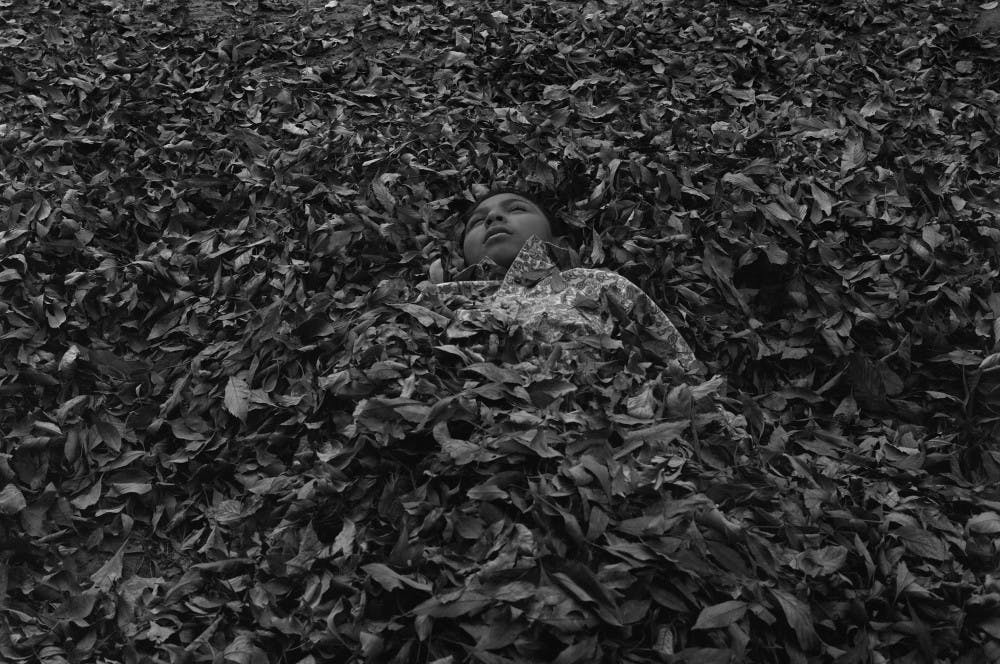For identities that are marginalized or frequently denied access to art, the artistic process necessitates as much an adaption of oneself to the art form as it requires a modification of the art form itself to accommodate one’s identity. As a recipient of the Center for Documentary Studies’ annual Dorothea Lange-Paul Taylor Prize, Mexican-American photographer Daniel Ramos has crafted a portfolio that can scrupulously capture his life’s winding contours: He was born in Chicago but now lives in Nuevo León, Mexico, and he spent his formative years rotating between these two distinctive places.
The Lange-Taylor Prize aims to recognize photographers whose work demonstrates an “in-depth understanding of place, history and the current situation, in concert with a personal relationship to the proposed work.” Ramos’s winning proposal, “The Land of Illustrious Men,” embeds itself in his self-understanding as an artist and first-generation immigrant. His parents’ fierce loyalty to their Mexican identity and their refusal to assimilate to American culture drew jagged lines around Ramos’ identity, making a seamless blend of homelife and the outside, dominant culture anything but a possibility. Ramos wanted to articulate his lived experiences that were discordant to the outsider but eventually found concordance within his own self-understanding as an adult.
“Ever since I was child, I can remember I wanted to tell stories,” Ramos said. “There always was something inside of me that wanted to express what I was living. I thought that I had a very unique life… [I was] always going back and forth between these two countries, and I never understood what was going on in my head.”
The moment that Ramos picked up a camera was the moment he found a medium to document his day-to-day life, compiling photographs over a period of more than 19 years that eventually culminated in “The Land of Illustrious Men.” The project aims to illuminate the lives of his family and friends in both Chicago and Mexico, tracking both the depth of his family’s history and his parents’ aspirations for immigrating to the United States. By treating his subjects and their stories with respect and meticulous profundity, Ramos hopes to present the working-class Mexican immigrant experience with esteem and comprehensiveness. He is not merely presenting one aspect of his existence, but rather all facets of what makes him — and those around him — human beings. He is attempting to capture all of personhood, going beyond mere documentation or anthropology.
“My uncle once said to me, ‘All these photographers, they go very far away to make pictures and stories. That’s all well and good, but if you can’t make something interesting around your block, then you really shouldn’t be making photography’… I thought about that for a very long time, and I realized that what is around me is what I should be taking pictures of,” Ramos said.
Ramos’ ambitious goal requires techniques that break the mold. Although a period of formal photography education instilled a respect for traditional form, Ramos has modified the art form in order to better capture the depth of emotion and struggle that underlies his photographs. For his solo exhibition of this project, which will open in Chicago next year, Ramos plans to create collages of family memorabilia and write his family’s stories on the surface of the photo negatives themselves, endowing their experiences with the permanency and recognition of the written word. The stories are written in a matter-of-fact manner that is characteristic of the way Ramos first heard them. Although the stories are stoic and uptight, there is a multiplicity of emotion within the words themselves and in the portrait beneath the story’s inscription.
In attempting to capture the person, Ramos also hones in on his subjects’ environments. His subjects stand away from the camera in all of his portraits, each embedded in their own natural environment, whether that be the warmth of a kitchen or bedroom or an arid pasture. By conveying a sense of landscape and surrounding, Ramos manages to explain, at least to a certain degree, why the person before us is who they are. His landscape photographs of working-class neighborhoods in both Nuevo León and Chicago enhance this sense of configuration, elucidating how our environments are as influential in our making of self-understanding as our interactions with friends and family members.
“I firmly believe that the environment that you’re in shapes who you are,” Ramos said. “With an environmental portrait, the space is also speaking, not only the subject.”
By carefully layering emotion transmitted through expression, language, and place, Ramos hopes to compile a composite image of vulnerability and empathy. The immigrant experience is neither pitiful nor worthy of contempt, but is beautiful and romantic in its own right.
“I think people really like to feel like everything’s okay, but it’s not,” Ramos said. “I observe that, [so] before I make a picture, I talk to a subject. And then I see a moment in them where they finally let themselves go, and I see who they really are. And to me, that’s vulnerability. I feel that is the most powerful thing you can see in a person. That’s where you can talk about the real problems… and that’s where compassion can arise."
Get The Chronicle straight to your inbox
Sign up for our weekly newsletter. Cancel at any time.

